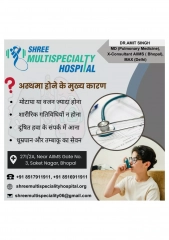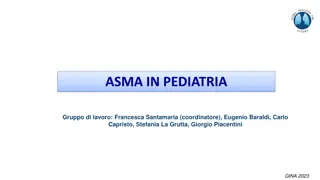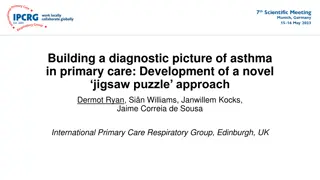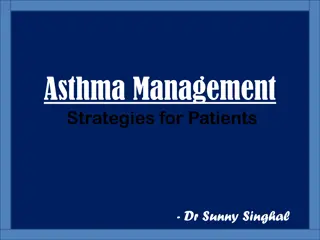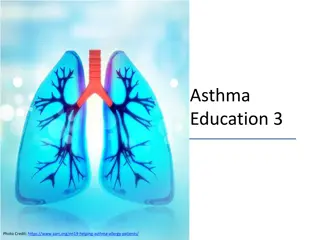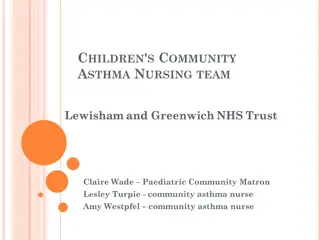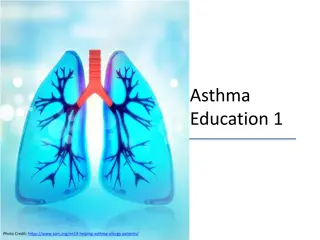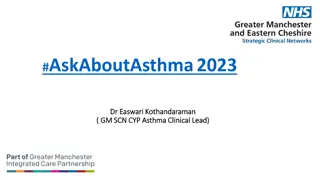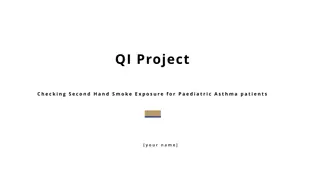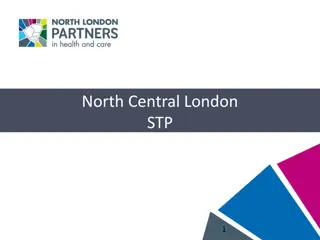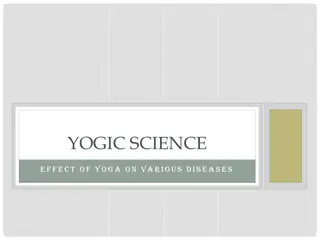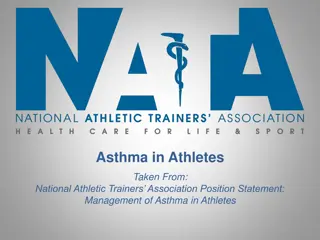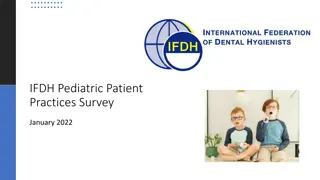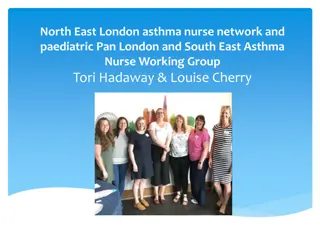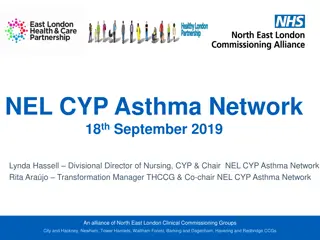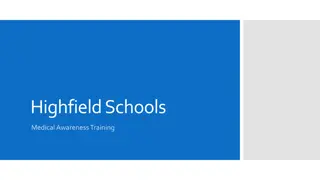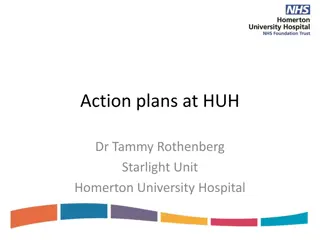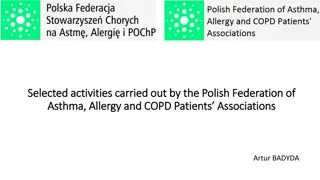Best Practices for High-Risk Pediatric Asthma Care
This resource outlines best practices for high-risk pediatric asthma care, focusing on guidelines-based approaches to assessing severity, providing education, environmental control, and pharmacologic therapy. It emphasizes the importance of asthma action plans, certified asthma educators, and environmental factors in managing asthma effectively.
- Pediatric Asthma
- Guidelines-Based Care
- Asthma Action Plans
- Environmental Control
- Pharmacologic Therapy
Uploaded on Oct 04, 2024 | 1 Views
Download Presentation

Please find below an Image/Link to download the presentation.
The content on the website is provided AS IS for your information and personal use only. It may not be sold, licensed, or shared on other websites without obtaining consent from the author. Download presentation by click this link. If you encounter any issues during the download, it is possible that the publisher has removed the file from their server.
E N D
Presentation Transcript
High-Risk Pediatric Asthma: Best practices for guidelines-based care August 21, 2018 Care Transformation Collaborative, PCMH-Kids Best Practice Sharing Meeting
Guidelines-based asthma care Four core components Component 1: Assessing and Monitoring Asthma Severity and Asthma Control Component 2: Asthma Education Component 3: Environmental Control Component 4: Pharmacologic Therapy / Medications
Guidelines-based asthma care 1) Assessing and Monitoring Asthma Severity and Control Priority action messages: Assess asthma severity at the initial visit to determine initial treatment. Assess and monitor asthma control and adjust treatment if needed. Schedule follow-up visits at periodic intervals.
Guidelines-based asthma care 2) Asthma Education Recommendation: Every practice serving people with asthma should have a Certified Asthma Educator (AE-C) on staff. All patients should be provided a written asthma action plan that includes two elements: 1: daily management 2: how to recognize and handle worsening asthma Asthma Action Plans especially important for patients with moderate or severe persistent asthma, history of severe exacerbations, or poorly controlled asthma
DID YOU KNOW? Asthma Action Plans are available in KIDSNET as writeable pdfs that can be uploaded and shared with School Nurse Teachers
Guidelines-based asthma care 3) Control of Environmental Factors Environmental considerations are both outdoor and indoor, which includes the home environment and school / daycare. Indoors tobacco smoke burning solid fuels animal dander insects (cockroaches, bedbugs) rodents (rats) mold and mildew scented products cleaners plant allergens Outdoors Air pollution Particulate matter (PM) Exhaust: Nox, SOx, Ox Air toxins from industry and transportation air quality alert days (ozone) Extreme heat or cold plant allergens
Environmental Control: Housing Home Asthma Response Program (HARP) Education-based home visiting intervention Medication adherence and compliance Identification and reduction of home asthma triggers Patient population: children who have been hospitalized or have had multiple emergency department visits for asthma Breathe Easy At Home (BEAH) Healthcare provider referral to city s housing code enforcement office (currently only four core cities) Referral completed through KIDSNET Housing code inspections, corrective action, and legal assistance Patient population: If medical provider suspects that substandard housing (unaddressed code violations) are major cause of poorly controlled asthma
Rhode Islands Asthma Intervention Launched in 2011 in collaboration with Hasbro Children s Hospital, St. Josephs Health Center, HARP is an evidence-based intervention with well- defined and tested partnerships, roles and responsibilities, curriculum, service delivery infrastructure, eligibility criteria, and evaluation framework.
Cost Savings: Reduced Utilization Combined claims data showed: Consistent reductions in ER and hospital costs Higher (% and total) reductions for high utilizer group Participant results out-performed expected reduction (regression to the mean)
Asthma Costs in Medicaid Median Cost of Care by population $4,500 $3,956 $4,000 $3,500 $3,000 $2,500 $2,101 $1,948 $2,000 $1,500 $967 $793 $744 $1,000 $456 $408 $389 $500 $0 2014 2015 2016 N= 365 6,265 98,725 377 5,888 101,377 345 5,667 102,674 Average Cost of Care by population $14,790 $16,000 $14,000 $12,000 $9,489 $10,000 $8,166 $8,000 $6,000 $3,372 $4,000 $2,652 $2,652 $2,411 $2,178 $2,170 $2,000 $0 2014 2015 2016 HARP eligible asthma, non-HARP Total Pediatric Medicaid N= 365 6,265 98,725 377 5,888 101,377 345 5,667 102,674
Screening Tool Screening: Health Care Use and Asthma Control If >1 ED visit or inpatient, and/or very poorly controlled symptoms (daily) If symptoms > 2x/week but less than daily (i.e. not well controlled) 2-3 sessions with Certified Asthma Educator (AE-C) and CHW Environmental Supplies and instruction for remediation Single HARP session with AE-C
Referral for HARP Community Asthma Program at Hasbro 401-444-8340 Miosotis Alsina: MAlsina@Lifespan.org Telephone screening for eligibility will be determined based on screening for ED/Hospital utilization, asthma control level, geography, and insurance, and patients can be enrolled in the appropriate comprehensive asthma services available.
Julian Drix Asthma Program Manager Division of Community Health & Equity Rhode Island Department of Health Julian.Drix@health.ri.gov (401) 222-7742


